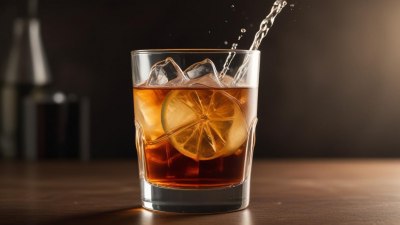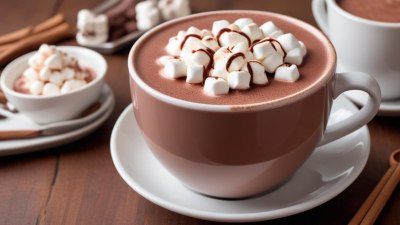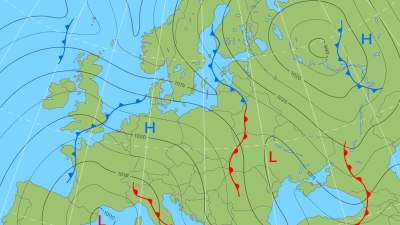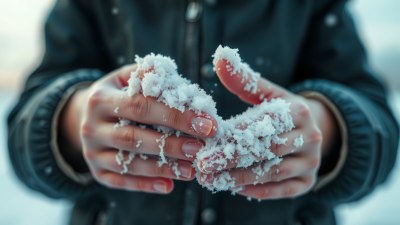The Physics of Your Drink Evaporating Before You Even Take a Sip
Explore the fascinating physics behind the evaporation of your drink before you take a sip.

This image was created with the assistance of Freepik
Have you ever poured yourself a refreshing drink, only to find it seemingly evaporating before you even take a sip? It’s a phenomenon that can be puzzling, but the physics behind it is both fascinating and enlightening. In this article, we’ll dive into the science of evaporation, exploring the factors that affect the rate of this process, and why your drink might disappear faster than expected.
Understanding Evaporation
Evaporation is the process by which molecules in a liquid state gain enough energy to enter the gaseous state. This transformation occurs at temperatures below the boiling point of the liquid. When a drink is exposed to the air, the molecules at the surface experience varying degrees of energy. Some are fast and energetic, while others are slower and cooler. The faster-moving molecules can break free from the liquid's surface and become vapor, leading to what we perceive as evaporation.
Factors Influencing Evaporation Rates
The rate at which evaporation occurs can be influenced by several factors:
- Temperature: Higher temperatures provide molecules with more kinetic energy, encouraging more rapid evaporation. Warm drinks, therefore, can evaporate faster than cold ones.
- Humidity: The concentration of water vapor in the air, also known as humidity, plays a crucial role. In low humidity, the air is drier, allowing molecules to escape more easily. In contrast, high humidity means the air is saturated with water vapor, slowing down the evaporation rate.
- Surface Area: The larger the surface area of a liquid, the more molecules are exposed to the air, which increases evaporation. A wide glass allows more evaporation compared to a narrow one, even with the same volume of liquid.
- Air Movement: When air flows over the surface of the liquid, it can carry away evaporated molecules, reducing their concentration near the liquid's surface and promoting further evaporation.
- Pressure: Atmospheric pressure can also influence evaporation. At lower pressures, evaporation occurs more readily, which is why liquids can boil at lower temperatures when the pressure is reduced.
The Role of Surface Tension
Surface tension is a crucial factor in evaporation. It is a property of liquids that causes them to behave like a stretched elastic membrane at the surface. Molecules at the surface of a liquid experience a net inward force due to cohesion with other liquid molecules. This tension can initially hinder evaporation, as the molecules must overcome this force to escape. However, as some molecules do escape, the surface tension can decrease, allowing for more molecules to break free, leading to increased evaporation as time goes on.
Evaporation and Cooling
Another interesting aspect of evaporation is its cooling effect. When molecules gain enough energy to evaporate, they carry away heat with them. This is why sweating cools us down; as the sweat evaporates, it removes heat from our skin. Similarly, if you have a drink that is warm when poured, the initial evaporation can cool the drink slightly, making the surface feel cooler than you might expect.
The Implications of Temperature and Humidity
Let's say you've just poured yourself a cold glass of water on a warm, dry day. The molecules at the surface will begin to evaporate quickly, especially as the surrounding air is dry (low humidity). In contrast, if you were to take that same glass into a steamy bathroom where humidity is high, you would notice that the rate of evaporation slows down considerably.
Practical Applications of Evaporation
Understanding evaporation has practical applications in various fields. In culinary practices, chefs leverage evaporation to concentrate flavors. For instance, when reducing sauces, they allow water to evaporate, intensifying flavors. In beverages, carbonation can be affected by evaporation; the carbon dioxide in fizzy drinks can escape if left uncovered, resulting in a flatter drink. This is why drinks are typically served with covers or lids when not being consumed.
The Science of Staying Hydrated
For those concerned about how quickly their drinks evaporate, consider choosing containers that minimize evaporation. Insulated bottles, for example, help retain temperature and limit exposure to air, significantly reducing the evaporation rate. Not just for hot or cold beverages, these types of containers can keep your drink intact until you’re ready to enjoy it.
The evaporation of your drink before you take a sip is more than just a quirky observation; it is a prime example of physical science in action. Factors like temperature, humidity, surface area, air movement, and even pressure interact in complex ways to determine how quickly liquids vaporize. The next time you pour a drink, take a moment to appreciate the science at play as your refreshing beverage begins to disappear. Embrace the idea that while evaporation can be frustrating, it is a natural phenomenon grounded in fascinating physics. So, whether you are savoring a hot cup of tea or a cold lemonade, remember the intricate balance of forces working every moment to transform that liquid into vapor.











